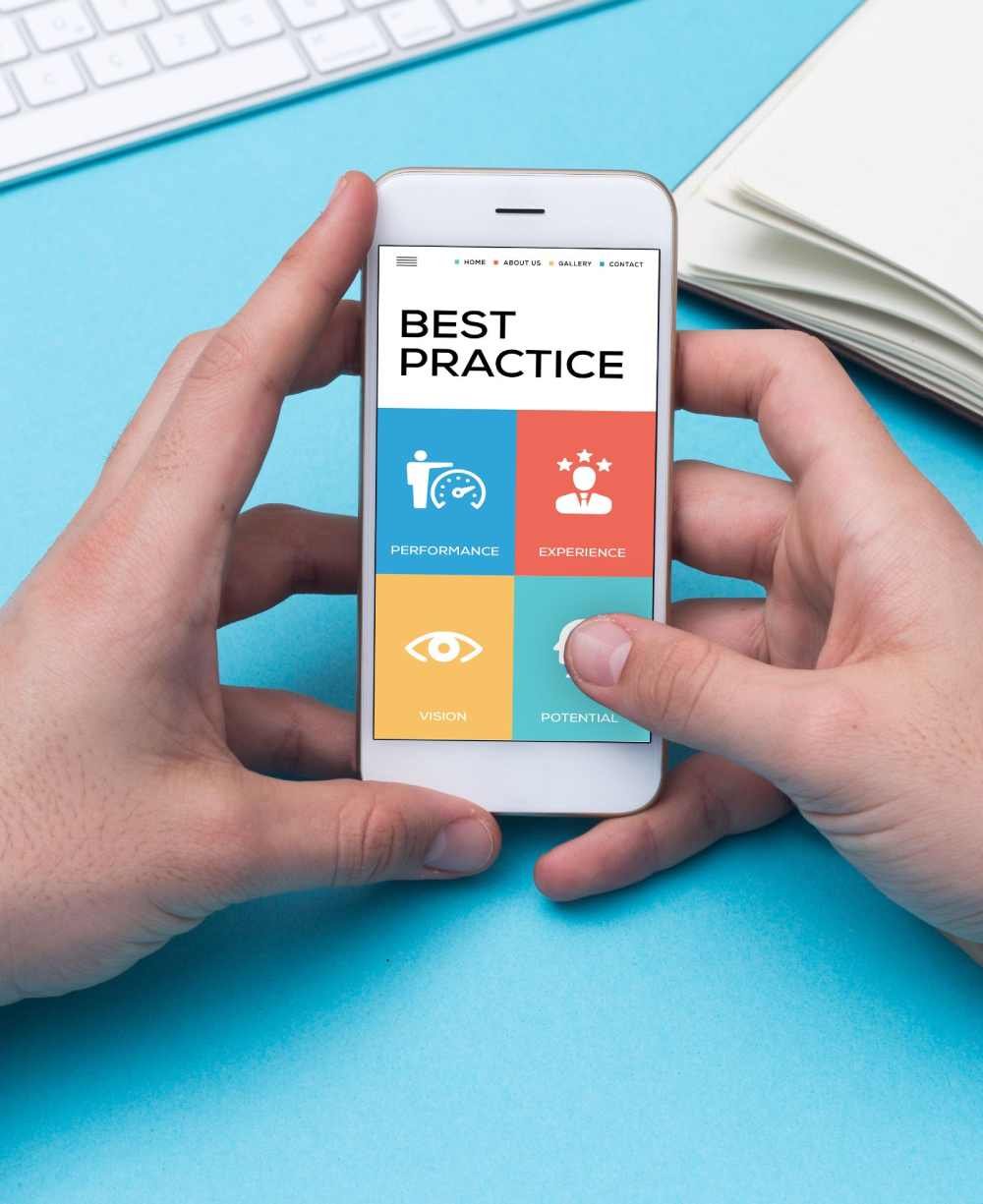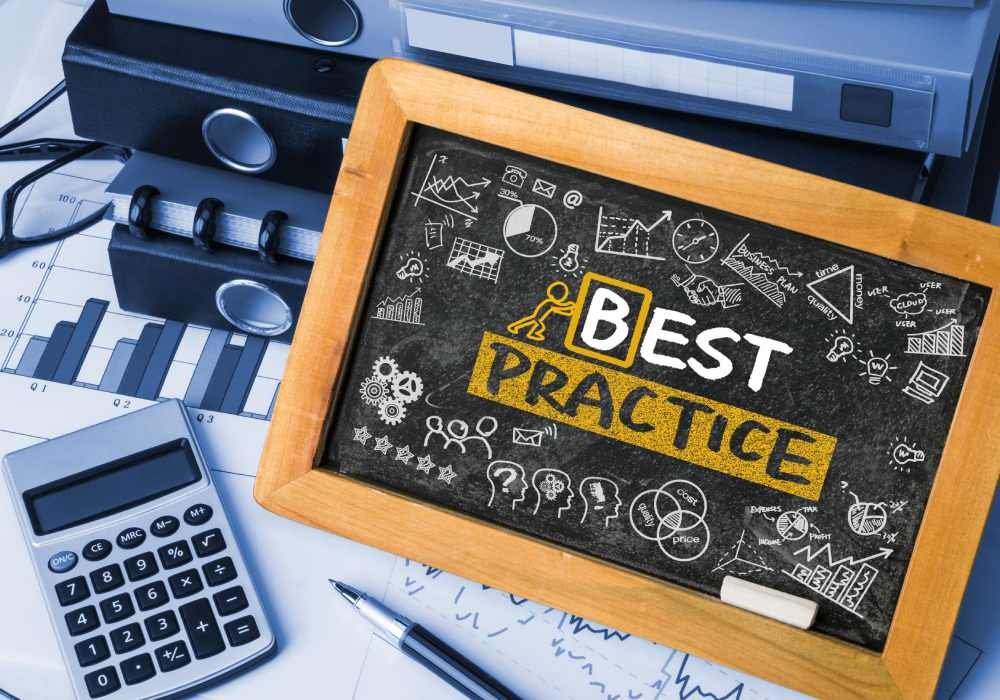After assisting clients in sending over 1 billion emails in the last 2 decades, we have compiled the ultimate guide to help you navigate the dynamic world of email marketing in 2023.
Whether you’re a seasoned email marketer looking to fine-tune your strategies or just starting your journey, our comprehensive guide equips you with the latest best practices and insights to empower your campaigns for success.
This guide is your roadmap to achieving optimal engagement, conversion rates, and customer satisfaction through email marketing.
Let’s dive into the strategies, tactics, and tips that will elevate your email marketing efforts to new heights in 2023 and beyond.

- What are the main Email Marketing Best Practices?
- What is the importance of following Email Marketing Best Practices
- Understanding Your Audience
- Crafting Compelling Content
- Call to Action
- Design and Layout Best Practices
- Automation and Scheduling
- Analytics and Tracking
- Email Campaign Optimization
- Email Deliverability
- What is IP Warm-Up
- Frequently Asked Questions

What are the main Email Marketing Best Practices?
Email marketing best practices encompass a set of guidelines and strategies designed to maximize the effectiveness of an email marketing strategy.

Identity
An email must be sent from a genuine person name or company name. The email must contain the genuine sender authentication records, company name, address and reply-to email address.
Pro tip: Use this point to evaluate an ESP (email marketing platform).

Unsubscribe button
An email recipient should be able to unsubscribe with a single click, i.e. if he/she clicks on the unsubscribe button in your email, it should direct him/her to a landing page with confirmation of the unsubscribe action instead of adding further steps.

Double opt in Email Contact List
The most important email marketing best practice is to ensure you have verifiable permission of your email subscribers along with date and timestamps to avoid getting into compliance issues.

Legal Product/Service
The nature of your email content or monthly newsletter should contain only products or services which are considered legal in the geographical location of your email subscribers.

Genuine Preview Text
An email’s preview text should not contain misleading information especially which is not present in the email body. Also known as ‘click bait’ to increase click through rate.
What is the importance of following Email Marketing Best Practices
Following email marketing best practices is of paramount importance for several compelling reasons.

Firstly, adhering to these practices ensures that your email campaigns maintain high professionalism and credibility. This professionalism helps build trust with your subscribers and recipients, crucial for long-term customer relationships and brand reputation.
Secondly, email marketing best practices are essential for legal compliance. Failure to follow regulations, such as the CAN-SPAM Act in the United States or GDPR in Europe, can result in severe penalties and damage your brand’s reputation. By following best practices, you are committed to respecting subscribers’ privacy and preferences, reducing the risk of legal issues.
Best practices directly impact the effectiveness of your email campaigns. Optimizing your emails for deliverability (Open and Click rates) ensures that your messages reach and resonate with the intended audience. It leads to higher engagement, increased conversions, and a higher marketing ROI.
Understanding Your Audience
Understanding your customers is the foundation of effective communication and successful engagement that form strong email marketing best practices.
By understanding your audience more deeply, you’ll be better equipped to tailor your messaging, products, and services to create meaningful connections and drive the desired outcomes.
Segmentation Strategies
Good email marketing starts with knowing your audience. One way to understand your audience better is through segmentation. Some standard segmentation criteria include:
- Geographic location
- Age and gender
- Past purchase behavior
- Email engagement (open and click rates)
- Interests and preferences
Using email marketing tools leveraging segmentation strategies, you could effectively tailor your email content to resonate with each group. Tailored content enhances email relevancy, increasing customer engagement and better results.
Utilizing Buyer Personas
Another helpful method to better understand your audience is creating buyer personas. Based on reliable facts and market research, a person of buyers is a picture of your ideal consumer. You can build buyer personas by considering the following aspects:
- Demographics (age, gender, education, income, occupation)
- Motivations and goals
- Pain points and challenges
- Information sources and communication preferences
With clearly defined buyer personas, you can craft personalized email marketing campaigns targeting each persona’s needs and preferences. This comprehensive approach helps build a stronger connection with your audience, improving open rates, click-through rates, and conversions.
Crafting Compelling Content
In an era defined by an abundance of information, the capacity to seize your audience’s attention and maintain it is of utmost importance.
This guide serves as your gateway to a realm of strategies, techniques, and creative insights that will enable you to fashion content that profoundly resonates, engages, and motivates your readers.
Together, we shall delve into the nuances of storytelling, the potency of persuasive language, and the science underpinning the psychology of audiences.

Effective Subject Lines
Crafting effective email subject lines is an essential part of email marketing. A good subject line grabs the reader’s attention and encourages them to open the email. Keep email’s subject line lines short, around 50 characters or less, to ensure they don’t get cut off in email previews. Incorporate action words and create a sense of urgency in the email subject lines while avoiding overly promotional language. Experiment with personalization by using the recipient’s name or relevant keywords, and make sure to A/B test various subject lines to determine which ones work best.
Pro tip: An important email marketing best practice is to ensure similar preview text as in the subject line and not misleading or ‘click bait’ type content.
Personalization Techniques
Personalization plays a significant role in creating compelling email content as it helps establish a connection with the reader. Implement personalization techniques by:
- Using the name of the recipient in the subject line or body of the email
- Segmenting your email list based on customer attributes, such as demographics, interests, or purchase history
- Tailoring offers and recommendations based on the recipient’s previous interactions with your brand
- Utilizing dynamic content blocks to display different content to different segments of your audience
Remember to be thoughtful with the extent of personalization and always consider the recipient’s privacy.
Call to Action
A clear, compelling call to action (CTA) is crucial for successful email marketing campaigns. CTAs should be easily identifiable, placed in a prominent position, and surrounded by white space to make them stand out. Use action-oriented and persuasive language to encourage the reader to take action. Please limit the number of CTAs per email to avoid overwhelming the reader and to maintain focus on the main objective of the email message itself.

When it comes to formatting email content, consider the following:
- Breaking up lengthy text into smaller paragraphs for readability
- Using bullet points to organize lists
- To emphasize vital information, use bold or italic text.
- Including tables when appropriate to display data in an organized manner

By following these recommendations for the most effective email marketing platforms for crafting compelling email content, marketers can construct effective email campaigns that engage their target audience and drive desired outcomes.
Schedule a CallDesign and Layout Best Practices
Visual appeal is a cornerstone of practical design and layout. In a world where information inundates our senses, the visual elements of your content can be the difference between capturing your audience’s attention or losing it to the sea of digital noise.
Design and layout best practices are not just about creating something aesthetically pleasing; they are about creating a cohesive and compelling visual story that guides your audience through your content with clarity and purpose.
This guide will delve deep into the principles, techniques, and strategies that can transform your designs from ordinary to outstanding.
Responsive Design
Responsive design entails creating emails that adjust their content and layout based on the user’s screen size. This way, your emails look great when viewed on a desktop, tablet, or smartphone. Use responsive email template templates and test your design on multiple devices to ensure it adapts well.
Visual Elements
Including visually appealing elements such as preview text, images, graphics, and icons can make your email campaigns more engaging and more accessible to digest. However, don’t overdo it—balancing visual elements and text is crucial. Ensure images are high-quality, and consider using alt text for those that don’t load or for users who use screen readers.
Email Campaign Size
Keep your emails lightweight by being mindful of the file size of your campaign’s visual elements. Large images and other media can cause your email to load slowly, leading to a poor user experience or even message abandonment. Compress your images and consider using cloud-based hosting to ensure quick loading times.
Video in Email Templates
Integrating video into your email templates can grab your recipient’s attention and boost engagement. Studies have shown that including video in email campaigns can increase a campaignclick-through rates. However, not all email clients support embedded video, so providing a fallback image and linking the video to a separate web or landing page is essential.
Whitespace Management
Proper use of whitespace—or the space between text, images, and other design elements—is crucial to ensure a visually appealing and easy-to-read email campaign. Whitespace helps guide the reader’s eye through the content and improves readability. To manage whitespace effectively, split up large blocks of text into shorter paragraphs and use lists, bullet points, and appropriate formatting (e.g., bold text) to break up content and emphasize key points.
Automation and Scheduling
With email automation, businesses can create highly relevant and timely email campaigns, improving customer engagement, nurturing leads, and driving conversions. This approach can encompass many activities, including welcome emails, abandoned cart reminders, email drip campaigns, and post-purchase follow-ups.
The key benefits of email automation include increased efficiency, scalability, and the ability to deliver tailored content to the right audience at the right time. It also enables businesses to track and analyze email campaign performance, helping them refine their strategies for better results.
In this guide, we will discuss email marketing best practices in the automation and scheduling of emails.
Drip Campaigns
Drip series campaigns are a series of pre-written, automated emails sent to subscribers over a specified period. These campaigns help nurture leads and keep customers engaged with valuable content. It is essential to create personalized, relevant content for each stage of the buyer’s journey and avoid overwhelming subscribers with too many emails. Some marketing best practices used for effective drip campaigns include:
- Define your goals: Identify the campaign’s purpose to guide content creation and measure success.
- Segment your audience: Tailor content for specific groups based on demography, behavior, or engagement level.
- Test and optimize: Monitor campaign performance and adjust accordingly to improve engagement rates.
Trigger-based Emails
Trigger-based emails are automated messages sent in response to specific events or actions. These emails can include welcome emails, cart abandonment reminders, and post-purchase follow-ups. Following best practices can increase the effectiveness of trigger-based emails:
- Identify critical triggers: Determine the customer behaviors and events that warrant a targeted email.
- Craft compelling content: Create engaging, relevant, and valuable content for each trigger-based email.
- Set appropriate timing: Ensure the timing of the email aligns with the event or action that triggered it.
Email Segmentation
Email segmentation is the practice of segmenting your subscriber list into smaller, targeted groups based on factors such as demographics, behavior, or interests. Implementing effective email segmentation can lead to higher open and CTRs. Here are some best practices to follow:
- Collect relevant data: Use signup forms, surveys, and interactions to gather necessary information about your subscribers.
- Define meaningful segments: Create segments that align with your goals and marketing strategies.
- Test and refine: Analyze and adjust segmentation strategies to improve email performance.
Best Times to Send
Determining the best email time can significantly impact open rates and engagement. While there might not be a one-size-fits-all solution, some general guidelines can help identify optimal sending times:
- Consider time zones: Be aware of the time zones of your audience to send emails at appropriate local times.
- Analyze subscriber behavior: Review past email performance to identify patterns related to the most successful sending times.
- Test different times: Experiment with sending times and measure the open and click-through rates to determine the best timing for your audience.
Analytics and Tracking
Email marketing success relies on understanding performance through analytics and tracking. This section will explore the importance of key performance indicators, A/B testing, and conversion tracking in email marketing campaigns.

Key Performance Indicators
Key performance indicators (KPIs) are essential for measuring the effectiveness of your email marketing campaigns. Some of the most common KPIs in email marketing include:
- Bounce rate: The percentage of sent emails that fail to reach recipients’ inboxes
- Open rate: The percentage of recipients who open your emails
- Click-through rate (CTR): The percentage of recipients who click on links within your emails
- Conversion rate: The proportion of email recipients who act, such as completing a purchase or subscribing to a newsletter.
Monitoring these KPIs helps email marketers identify areas for improvement and optimize their campaigns for success.
A/B Testing
Split testing is a strategy for optimizing email marketing campaigns. This technique involves comparing two versions of the same email marketing platform to see which performs better. Key elements to test include:
- Subject lines
- Preheader text
- Email design and layout
- Call-to-action buttons
By conducting A/B tests, marketers can make data-driven decisions on what elements to include in their emails, resulting in higher engagement and conversions.
Conversion Tracking
Tracking conversions in email marketing allows you to understand the effectiveness of your campaigns in driving desired outcomes. Analyzing and improving conversion rates in targeted campaigns can lead to better overall results.
To track conversions effectively:
- Set up goals: Define the desired action(s) you want recipients to take, such as purchasing or signing up for a newsletter.
- Implement tracking: Use tools like Google Analytics or email marketing software to track conversions.
- Analyze data: Review conversion rates and other KPIs to identify areas for improvement.
Through diligent analytics and tracking, email marketers can refine their campaigns for optimal performance, which leads to better results and a higher return on investment.
Email Campaign Optimization
This systematic email marketing best practice approach is crucial to achieving top-tier performance and ensuring that every email is an effective communication tool.
In this guide, we dive into the intricacies of email campaign optimization, offering practical strategies and techniques to enhance your campaigns, boost engagement, and deliver exceptional results.
List Management
Successful email marketing begins with proper list management. Regularly maintain and update your email lists to target the right audience. Use segmentation techniques to split your subscribers into specific groups based on their preferences, behavior, and demographic data. It will allow you to send highly targeted content, increasing engagement and better results.


Deliverability Improvements
Deliverability is a component of any email marketing strategy since it directly affects campaign success. To optimize deliverability, pay close attention to the following:
- Sender reputation: Maintain an excellent reputation to prevent your emails from being marked as spam. It includes keeping bounce rates low and observing email sending frequency.
- Authentication: Use industry-standard protocols such as SPF, DKIM, and DMARC to verify your sending domain and email address. It ensures that your emails are legitimate.
- Email hygiene: Ensure your lists are clean and up-to-date by removing bounces, invalid addresses, and spam traps.
Re-Engagement Strategies
Re-engagement strategies are an essential part of email campaign optimization. These tactics re-activate inactive subscribers and reduce list churn. Some effective methods for re-engagement include:
- Win-back campaigns: A targeted series of emails sent to inactive subscribers with special offers, promotions, or valuable content to encourage them to re-engage with your brand.
- Automated triggers: Set computerized triggers based on subscriber inactivity, such as sending a personalized email after a certain period of no engagement.
- List clean-up: If a subscriber remains inactive despite your re-engagement efforts, consider removing them from your list to maintain overall list health and improve deliverability rates.

Email Deliverability
Email deliverability is a fundamental pillar of email marketing best practices. Ensuring that your email messages reach their intended recipients’ inboxes reliably and consistently is paramount in digital communication.
It involves complex factors, from sender reputation to content quality and technical configurations.
In this exploration of email deliverability, we will delve into the crucial aspect of email marketing, providing you with the knowledge and methods you need to optimize your email marketing for maximum reach and effect.
Improving Sender Authentication
To improve sender address authentication, follow these steps:
- Set up SPF, DKIM, and DMARC records for your domain. It will help prove to mailbox providers that your emails are legitimate.
- Maintain a consistent “From” address in your emails. It builds trust and recognition among your email subscribers.
- Publish a DNS record with your sending IP address. It helps improve your IP reputation with mailbox providers.
Blacklist Delisting
Being listed on email blacklists hinders deliverability. To delist from blacklists:
- Identify the blacklist(s) affecting your email delivery using tools like MX Toolbox.
- Review the blacklist’s criteria and determine what issue(s) led to your listing.
- Address the root causes (e.g., reduce spam complaints, remove wrong email addresses, improve email content).
- Request delisting by following the specific blacklist’s delisting procedures.
Note: Delisting might not be immediate, and some blacklists have automatic delisting after a specific period.

What is IP Warm-Up
IP warm-up is gradually increasing your email sending volume on a new IP address or a dedicated IP address with a low sending reputation. It helps build a positive sending reputation with mailbox providers’ welcome emails, reducing the chances of deliverability issues.
To warm up your IP:
- Start with a low sending volume and increase it daily.
- Focus on sending to your most engaged subscribers first.
- Closely monitor your open, bounce, and complaint rates during the warm-up period.
- Adjust your sending volume as needed based on the results.
Feedback Loop Management
A feedback loop (FBL) allows email senders to receive reports about how recipients interact with their emails. By managing FBLs, you can:
- Identify recipients who marked your emails as spam and remove them from your list, reducing complaint rates.
- Monitor and address underlying issues that may cause negative recipient responses (e.g., poor content, high-frequency sending).
- Maintain a healthy relationship with email service providers (ESPs) by actively addressing user concerns.

Sign up for feedback loops with significant email client mailbox providers like Gmail, Yahoo, and Microsoft to gain insight into your email performance and improve your email deliverability.
Frequently Asked Questions
How often should I send marketing emails?
Generally, it is a good practice to maintain a consistent schedule especially for daily, weekly or monthly newsletters. Analyze your audience’s engagement and preferences and adjust your frequency accordingly. Be sure to keep new subscribers manageable through the same message, as this may lead to declining opens and click-through rates or potentially unsubscribing.
What are the critical aspects of crafting effective email content?
Effective email content should have a clear purpose, be concise, and use a compelling subject line. Use personalization when appropriate and ensure your content is relevant and valuable to the recipient. Always include a clear call-to-action (CTA) and structure the content for easy readability with headings, bullet points, and short paragraphs.
How can I avoid my marketing emails to get stuck in spam filters?
Although there is no guarantee, but here are some pro tips that general work with any email marketing strategy.
Avoid using all caps, excessive punctuation, or trigger words in your email subject line.
Make sure your “from” address is recognizable, from an authenticated domain and legitimate.
Use a reliable ESP with an email marketing software or an all in one email marketing platform.
Include a clear unsubscribe option in every email
Monitor your sender reputation, open rates, and bounce rates for potential issues.
What strategies would work best for B2B email and other channels in 2024?
Email marketing automation or an email drip campaign tailor-made to the audience with specific messaging would work best in terms of engagement and marketing ROI.
Additionally offering freebies like a whitepaper, webinar invitation or valuable content downloads can help improve the engagement with your email subscribers.
What are the essential steps in creating a successful email marketing campaign?
Creating a successful email marketing campaign involves several steps: setting clear goals, defining your target audience, planning and creating relevant and engaging blog post content, designing mobile-friendly templates, segmenting your audience for targeted messaging, including clear CTAs, testing and optimizing your emails through A/B testing, tracking and analyzing your email drip campaign’s performance for improvement, and maintaining a clean, up-to-date email and contact list yourself.
How do industry trends affect email marketing best practices?
Industry trends can also significantly impact email marketing and email marketing best practices. For example, increases in mobile usage have led marketers to adopt mobile-first design, while stricter data privacy regulations require more transparent and compliant email marketing practices. Artificial intelligence and machine learning advancements allow increased personalization and automation capabilities. It is vital to stay current on industry trends and best practices to ensure the continuous success of your email marketing initiatives.
How can I write engaging subject lines for my marketing emails?
Crafting engaging subject lines is crucial for email marketing success. Consider using action words, personalization, and curiosity to grab recipients’ attention and entice them to open your emails. Regularly A/B testing different subject lines can also help identify what resonates best with your audience.
What are some best practices for designing effective landing pages in email campaigns?
Effective landing pages should be visually appealing, aligned with your brand voice, and offer a clear and compelling call-to-action (CTA). Ensure the landing page content matches the email’s message, providing click-through recipients with a seamless and engaging experience.
Why is including an unsubscribe link in marketing emails important, and how should I implement it in other marketing channels?
Including an unsubscribe link in promotional emails is crucial for maintaining compliance with email marketing regulations and respecting recipients’ preferences. Ensure your unsubscribe link is easily accessible and functional, allowing recipients to opt out of your emails effortlessly.
How can I maintain a consistent brand voice in my email marketing campaigns?
Building brand recognition and trust requires a consistent brand voice. Develop clear brand guidelines that define your tone, style, and messaging, and ensure all email content adheres to these guidelines. This consistency helps recipients recognize and connect with your brand.
How can I make my marketing emails more mobile-friendly?
To optimize emails for mobile devices:
1. Ensure that your custom email templates themselves are responsive and mobile-friendly.
2. Use a single-column layout, readable fonts, and appropriately sized images.1.
3. To guarantee that your emails are appropriate, try them out on different mobile devices and email clients.
What key email marketing metrics should I monitor to evaluate campaign performance?
Monitoring email marketing metrics is crucial for assessing campaign performance. Open rate, conversion rate, click-through rate (CTR), bounce rate, unsubscribe rate, and delivery rate are all important metrics to monitor. Analyzing these metrics provides insights into your email campaigns’ effectiveness and helps identify improvement areas.
How can I improve my marketing emails’ click-through rate (CTR)?
To improve CTR, create compelling content and CTAs encouraging recipients to act. Use engaging visuals, concise and persuasive copy, and relevant links. A/B testing different elements, such as button colors and CTA placement, can help refine your approach.
What strategies can I use to measure the success of my email marketing campaigns effectively?
Measuring the success of email marketing campaigns involves setting clear goals and tracking relevant metrics. Establish key performance indicators (KPIs) based on your campaign objectives and regularly analyze metrics to evaluate performance. Adjust your strategy on the information gained from these measurements to optimize your marketing continuously. Ensure your strategies are always in line with email marketing best practices.
How can I ensure my marketing emails run through protection laws such as GDPR and the CAN-SPAM Act?
To ensure compliance with data protection regulations, maintain up-to-date email lists with proper consent records, include an unsubscribe link, clearly identify yourself as the sender, and respect recipients’ website visitors’ privacy preferences.
What strategies can I employ to increase the engagement of my marketing email campaigns?
To increase email engagement, focus on delivering valuable and relevant content, personalizing your messages, optimizing for mobile devices, segmenting your email list, and refining your subject lines and CTAs based on data-driven insights. Engaging content and consistent communication with your audience will drive better results in your email marketing efforts.
(Disclaimer: The contents in this article are not to be considered 100% accurate and/or legal advice. We have compiled and curated this article to the best of our industry knowledge. Please consult a licensed professional or lawyers for accurate advice especially in your geography).
Our Blog
Email marketing is a dynamic and rewarding field that offers vast career opportunities for those with the right skills and expertise. This
Connecting with potential and current customers directly in their email inboxes is crucial for any marketing strategy. Nevertheless, like any marketing method,
It is crucial to understand the continued importance of email marketing in converting leads into dedicated customers. We will provide a comprehensive

